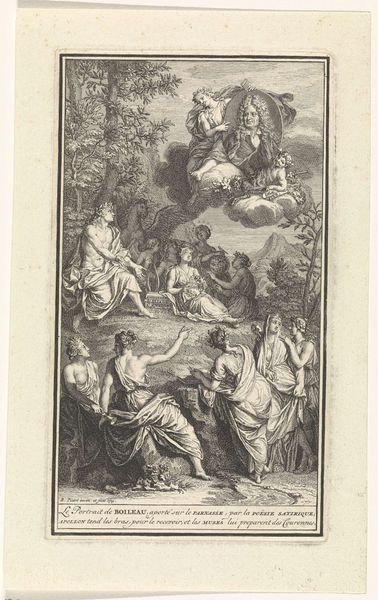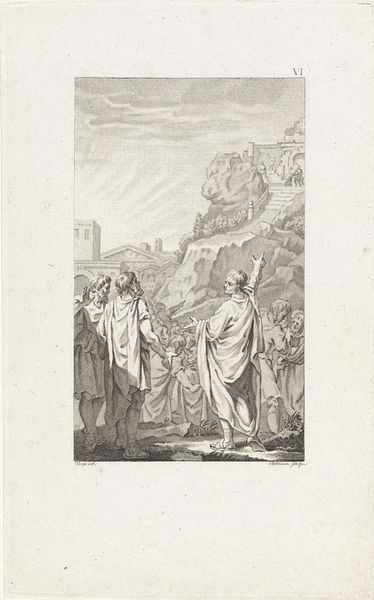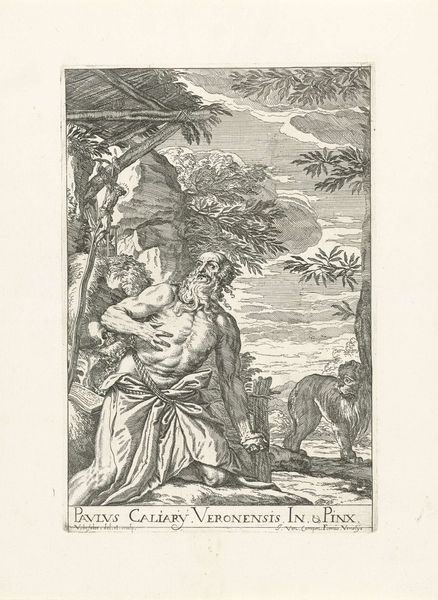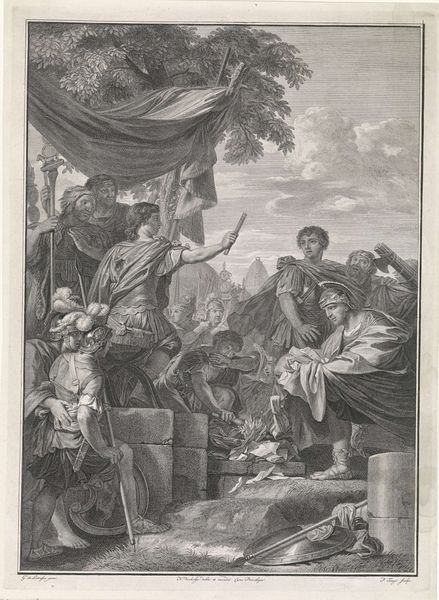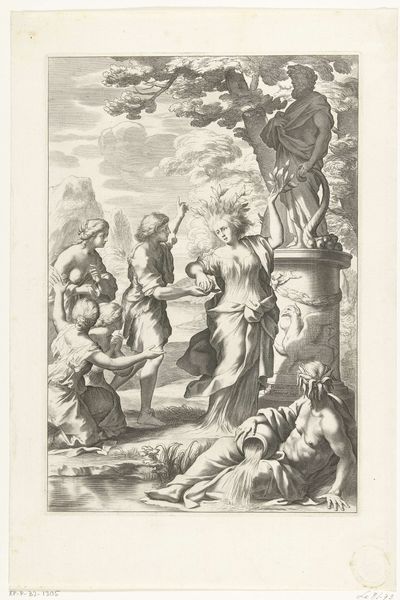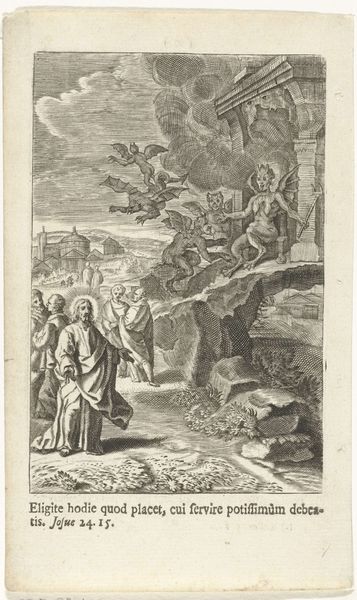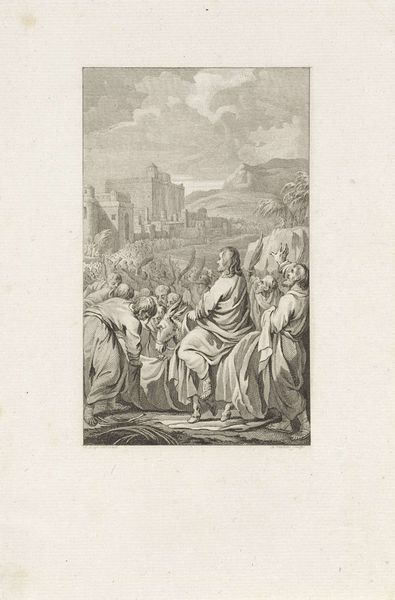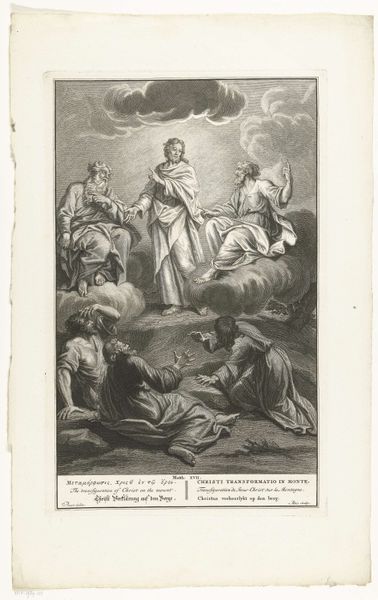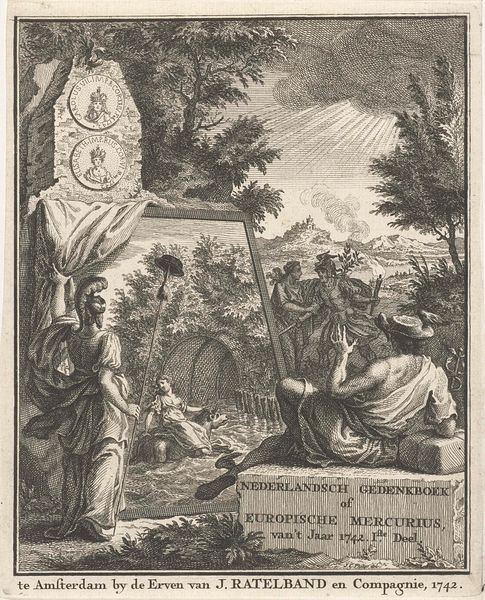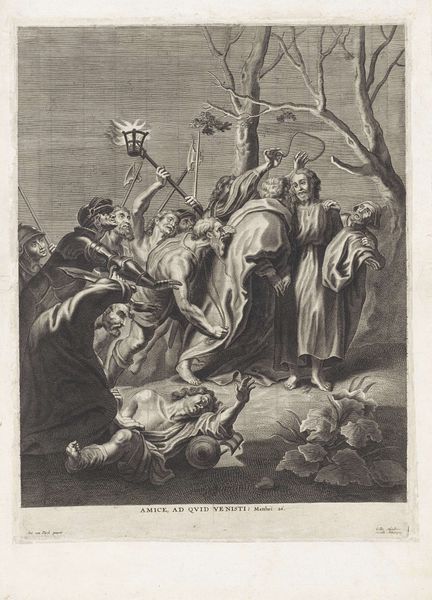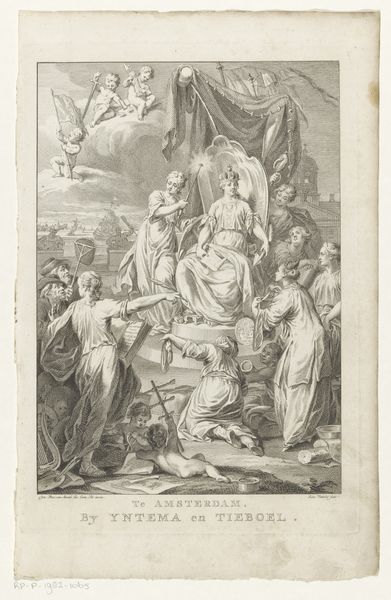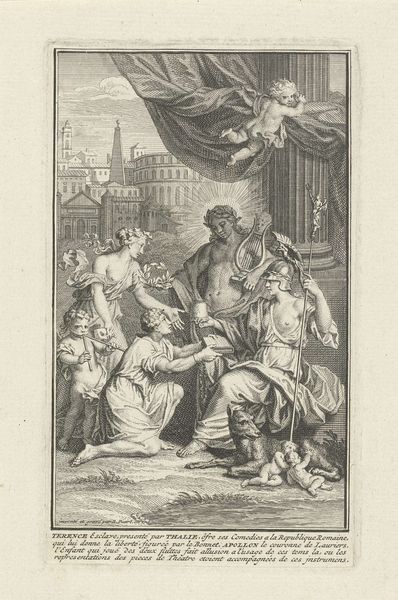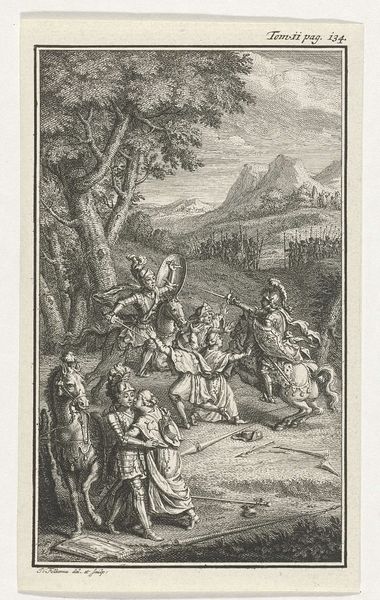
print, engraving
#
aged paper
#
toned paper
#
narrative-art
#
baroque
# print
#
old engraving style
#
figuration
#
history-painting
#
engraving
Dimensions: height 362 mm, width 232 mm
Copyright: Rijks Museum: Open Domain
Editor: This is "Christus verschijnt bij het Meer van Galilea," or "Christ Appears at the Sea of Galilee," an engraving by Jacob Folkema, sometime between 1702 and 1767. The texture of the aged, toned paper really draws me in. It's interesting to think about its age and how that affects the image itself. What do you see when you look at this print? Curator: What immediately strikes me is the labour involved in producing such a detailed print. Consider the artist's process: the deliberate crafting of each line with a burin, the intense physical effort to transfer the image onto the copper plate, the successive inking and printing of each copy. It wasn't simply about replicating an image, but engaging in a craft rooted in tradition, skill, and accessibility via dissemination. Think about the social implications of reproducing the gospels in the homes of regular folk. Editor: That’s fascinating. So, you’re focusing on the physical act of creation and how that impacted the accessibility of religious imagery at the time? I hadn’t really considered that. Curator: Exactly. Furthermore, look at the consumption of the artwork. Consider where this print would have been displayed, in what context it would have been viewed. Was it for contemplation, decoration, or some other purpose that relates to a form of consumption? Editor: I suppose I've always thought about prints from this era as more like... reproductions. Now, hearing you talk about it makes me consider it as an accessible format that could impact faith as commodity, so to speak. Curator: Precisely. This print offers a tangible connection to religious narratives and also served as a point of distribution of that story in various classes. By engaging with materiality, we uncover a complex relationship between artistic creation, social context, and consumer culture. Editor: Thanks, that really opens up my understanding of the work beyond just the subject matter. Curator: Absolutely! Focusing on materials and the labor embedded within encourages us to analyze visual narratives as culturally contingent.
Comments
No comments
Be the first to comment and join the conversation on the ultimate creative platform.
